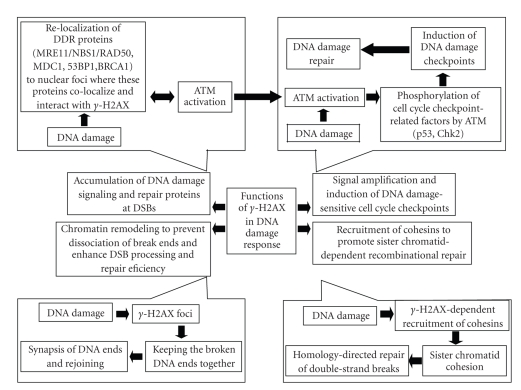Figure 1.
H2AX phosphorylation and its role in DNA damage response upon phosphorylation H2AX became critical player in DNA damage response. Activity of γH2AX could be summarized to following main points: accumulation of DNA damage signaling and repair proteins at DSBs The generation of DSBs triggers the relocalization of many DNA damage response (DDR) proteins such as MRE11/NBS1/RAD50, MDC1, 53BP1and BRCA1 to nuclear foci where these proteins colocalize and interact with γH2AX. Signal amplification and induction of DNA damage-sensitive cell cycle checkpoints γH2AX contribute to the recruitment of ATM to DSB sites and activation of ATM-dependent cell cycle checkpoints. Chromatin remodeling to prevent dissociation of break ends and enhance DSB processing and repair efficiency The γH2AX foci help keeping the broken DNA ends together and make successful and faithful repair more likely. Recruitment of cohesins to the site of DNA damage to promote sister chromatid-dependent recombinational repair DNA cohesion induced by double-strand DNA break and mediated by γH2AX has an important function during repair of double-strand breaks following DNA replication by holding the damaged chromatid close to its undamaged sister template.

